Uncategorized
Here’s to Rachael Carson: The First “Hysterical Housewife”
 50 years ago this month, Rachel Carson's Silent Spring was published and immediately created a national controversy. It's difficult to put the book in its true historical context now because we take so much of its message for granted, as well as the right of a woman scientist to get it published. But there's no question that in 1962 it was a very subversive act for many different reasons.
50 years ago this month, Rachel Carson's Silent Spring was published and immediately created a national controversy. It's difficult to put the book in its true historical context now because we take so much of its message for granted, as well as the right of a woman scientist to get it published. But there's no question that in 1962 it was a very subversive act for many different reasons.
There's an argument to be made that Carson didn't invent the modern American environmental movement. That it was the result of many different factors and people. All true. But there's also a compelling case that Carson's fight on behalf of her scholarship became the classic template for how citizens and industry and government would interact with each other in response to any environmental challenge coming from the grassroots for the next half-century.
Exhibit A: The New York Times Magazine piece this week on Carson. Consider:
1) She was the first to popularize the notion that we have a fundamental right to air and water that won't kill us.
“We are rightly appalled by the genetic effects of radiation. How then, can we be indifferent to the same effect in chemicals that we disseminate widely in our environment?
“If the Bill of Rights contains no guarantee that a citizen shall be secure against lethal poisons distributed either by private individuals or by public officials, it is surely only because our forefathers, despite their considerable wisdom and foresight, could conceive of no such problem.' She advocated for the birth of a grass-roots movement led by concerned citizens who would form nongovernmental groups that she called “citizen’s brigades.
As Carson saw it, the federal government, when in industry’s thrall, was part of the problem. That’s one reason that she didn’t call for sweeping federal regulation. Instead, she argued that citizens had the right to know how pesticides were being used on their private property."
2) She was the first to criticize our "modern" way of life as being self-destructive at a physiological level.
When she described the dangers of DDT and other pesticides, she described the threat as "poisons," not "chemicals."
“Silent Spring” was more than a study of the effects of synthetic pesticides; it was an indictment of the late 1950s. Humans, Carson argued, should not seek to dominate nature through chemistry, in the name of progress. In Carson’s view, technological innovation could easily and irrevocably disrupt the natural system."
As she finished the book, she was diagnosed with breast cancer. This gave her writing a more personal edge it probably would not have had otherwise. A biographer is quoted in the Times piece as saying, “She was more hostile about what arrogant technology and blind science could do."
“No one,” says Carl Safina, an oceanographer and MacArthur fellow who has published several books on marine life, “had ever thought that humans could create something that could create harm all over the globe and come back and get in our bodies.
Theo Colborn, an environmental health analyst and co-author of a 1996 book, “Our Stolen Future,” about endocrine disrupters — the chemicals that can interfere with the body’s hormone system — points out that Carson was on the cutting edge of the science of her day. “If Rachel had lived,” she said, “we might have actually found out about endocrine disruption two generations ago.”
3) She was the first to specifically identify young mothers as a key environmental demographic.
At a time when women were still second-class citizens and didn't have much economic clout, Carson specifically wrote in a way to get her female audience motivated to take action. She brought a moral message to what they were seeing in the everyday consequences of DDT use. Here's her writing about a squirrel killed by pesticides:
“The head and neck were outstretched, and the mouth often contained dirt, suggesting that the dying animal had been biting at the ground. By acquiescing in an act that causes such suffering to a living creature, who among us is not diminished as a human being?”
As the article points out, this was exactly the same kind of moral messaging that made Uncle Tom's Cabin the book that started and won the Civil War. Carson knew that women were the key to not only the DDT fight, but to every major environmental cause, and social justice movement. Next time you go to a grassroots environmental meeting or event, look around at the ratio of women to men and decide if she was wrong. Better yet, take a look at who the chemical industry is targeting with their advertising.
4) She was the first private citizen targeted for attack by the chemical industry.
This was the first time an entire industry specifically targeted a person for what they were writing and saying about the environmental and public health impacts of their product.
"Velsicol, a manufacturer of DDT, threatened to sue both Houghton Mifflin and The New Yorker. And it also tried to stop Audubon from excerpting the book in its magazine. The personal attacks against Carson were stunning. She was accused of being a communist sympathizer and dismissed as a spinster with an affinity for cats. In one threatening letter to Houghton Mifflin, Velsicol’s general counsel insinuated that there were “sinister influences” in Carson’s work: she was some kind of agricultural propagandist in the employ of the Soviet Union, he implied, and her intention was to reduce Western countries’ ability to produce food, to achieve “east-curtain parity.
The well-financed counterreaction to Carson’s book was a prototype for the brand of attack now regularly made by super-PACs in everything from debates about carbon emissions to new energy sources. “As soon as ‘Silent Spring’ is serialized, the chemical companies circle the wagons and build up a war chest,” Souder says. “This is how the environment became such a bitter partisan battle.”
In a move worthy of Citizens United, the chemical industry undertook an expensive negative P.R. campaign, which included circulating “The Desolate Year,” a parody of “A Fable for Tomorrow” that mocked its woeful tone. The parody, which was sent out to newspapers around the country along with a five-page fact sheet, argued that without pesticides, America would be overrun by insects and Americans would not be able to grow enough food to survive."
Does any of this sound familiar?
But her courage in the face of the industry's deluge gave others courage, and it still does so now. Think it's hard to do this work in 2012? Try taking on the Status Quo as a single woman with terminal cancer in 1962.
She didn't live long enough to see the multitude of legacies she left behind, but all of us are affected by them. Her call to arms produced the first real wave of popular environmentalism in the US that went by that name. Thanks Rachel.
Imagine That: Local Regulation of Polluters
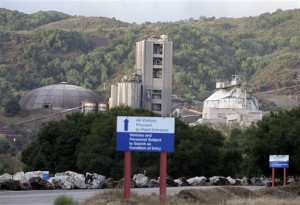 From San Francisco comes word that the area's largest Mercury polluter, the local Lehigh-Heidelberg Cement plant, may be the subject of tougher LOCAL air pollution regulations.
From San Francisco comes word that the area's largest Mercury polluter, the local Lehigh-Heidelberg Cement plant, may be the subject of tougher LOCAL air pollution regulations.
In 2011, the kiln spewed 260 pounds of Mercury into the local airshed and new regulations being proposed for the plant by the Bay Area Air Quality Management District would address not only this pollution, but emissions of dust, ammonia, dioxins, smog pollutants, and hydrocarbons.
In part, the new local rules are being spurred by EPA's own updating (and delaying) of its own air pollution rules for the nation's cement kilns. In part, local pressure from the public is driving their consideration. Bay Area for a Clean Environment collected over 1800 signatures demanding the new more stringent rules.
In California regional air boards are the prime shapers of air quality planning and policy, tailoring measures to their own geographical boundaries and problem areas. Imagine the 10-county DFW non-attainment area for smog (Collin, Dallas, Denton, Ellis, Johnson, Kaufman, Tarrant, Parker, Rockwall, Wise,) having its own air quality agency with the power to enforce new anti-pollution measures without having to get Governor Rick Perry's permission. Local control also means more opportunity for local citizens to have input rather than being blown off by ideologues in Austin intent on scoring political points rather than cleaning the air.
As we've noted before, if DFW officials really want cleaner air, they're going to have to get it themselves.
New Free Service Provides Local Environmental Alerts
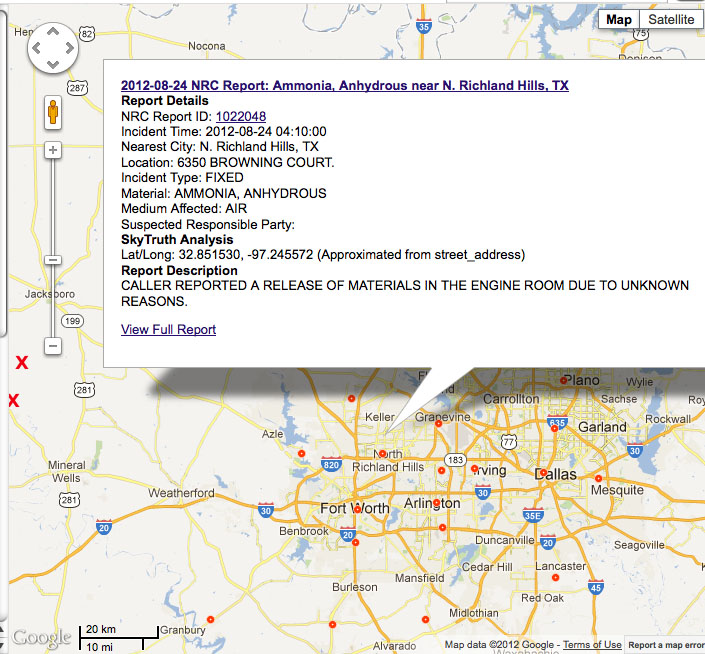 We were just speaking of how invaluable local blogs are and here's a great example. From Susan Read and the Westchester-Grand Prairie Community Alliance comes word of an invaluable service that allows you to track reported events like spills, accidents, and investigations in your area.
We were just speaking of how invaluable local blogs are and here's a great example. From Susan Read and the Westchester-Grand Prairie Community Alliance comes word of an invaluable service that allows you to track reported events like spills, accidents, and investigations in your area.
"Skytruth" is a free subscribtion service that promises to "delivers real-time updates about environmental incidents in your back yard (or whatever part of the world you know and love)."
The SkyTruth alert system is a free service open to the public that provides daily updates of environmentally significant incidents by geographical area. You can browse the most recent incident reports on a map or in Google Earth, and you can also subscribe to a personalized feed of incident reports via RSS or email
The alert feed currently contains reports generated from ongoing SkyTruth investigations, combined with selected reports from the the National Response Center that have been processed by SkyTruth's automated expert system to clean up problem data and add additional SkyTruth commentary and analysis.
No word on who or what is funding it, or on any Board of Directors or staff. But the infomation feeds are legit and timely. You pick the area you want Skytruth to monitor by zooming in and out on a Google map until you pick the boundaries and clicking. It's pretty darn easy. Check it out.
Former Bush EPA Regional Administrator Endorses Off-Sets in Dallas Gas Ordinance
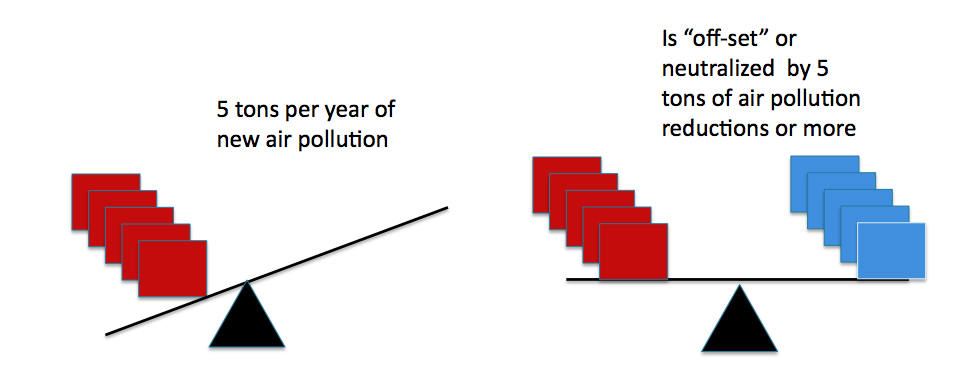 Many of you know Richard Greene as the former Arlington Mayor who was tapped by President George W. Bush to become Regional Administrator of the EPA in Dallas in 2003. Unlike many other Bush appointees, Green was not an ideologue. He was an administrator. And he lived in the area he was serving, and had already had stints as an Arlington Planning and Zoning Commissioner and Arlington Star-Telegram publisher. It didn't hurt that he could call the President up and shoot the breeze about the baseball team they both had an interest in.
Many of you know Richard Greene as the former Arlington Mayor who was tapped by President George W. Bush to become Regional Administrator of the EPA in Dallas in 2003. Unlike many other Bush appointees, Green was not an ideologue. He was an administrator. And he lived in the area he was serving, and had already had stints as an Arlington Planning and Zoning Commissioner and Arlington Star-Telegram publisher. It didn't hurt that he could call the President up and shoot the breeze about the baseball team they both had an interest in.
Greene was a supporter of Downwinders' Green Cement campaign, and promoted its use as part of the larger 2006-7 DFW clean air plan. His support gave legs to what was then just an idea, a concept. He helped transform it into the kind of de facto regional purchasing policy that contributed to TXI and Ash Grove's decisions to close their dirtier old wet kilns, and in the process reduce hundreds of thousands of tons of air pollution each and every year.
So it was a kind of a big deal when Greene took the time to write the Dallas Morning News a letter endorsing the idea of "off-sets" for air pollution from natural gas mining and processing – the newest de facto regional air quality strategy Downwinders is promoting to rein-in gas emissions that are rising rapidly. Published on September 12th here it is in its entirety:
City should set drilling example
As the City Council prepares to write a new ordinance regarding urban oil and gas drilling, Dallas has a unique opportunity to once again set a regional clean air example, while also tapping into a needed energy source.
Natural gas is an important part of the nation's energy mix. However, when it comes to metropolitan areas like D-FW that are in nonattainment of the Clean Air Act, those circumstances should be crafted so as to not allow new emissions to cancel out previous hard-won reductions.
The kinds of facilities that operators use to produce and process natural gas are diffuse over a large area. They're not centralized like a power plant or a factory, and so under current federal law these facilities, no matter how concentrated or connected, are not covered under the traditional offsets rule.
Dallas could change that with an innovative expression of local control. The city could require reasonable offsets for new industries that emit a significant amount of air pollution, including natural gas operators, as part of a new urban drilling ordinance.
Since local gas producers project little impacts from their operations, the burden should not be a deterrent to drilling here.
Richard Greene Arlington,
former EPA regional administrator
Remember, this is from George Bush's personal appointee to run the Regional EPA.
When citizens met with Dallas councilwoman Linda Koop – the council's go-to person on all things air quality – she had a hard copy with her. She reportedly had "no problem" with off-sets, but thought it might take more time to establish than the council has before voting on a final ordinance. Citizens expressed confidence it could be done sooner and at last word, she was trying to arrange a meeting between city and EPA staffs to talk about the mechanics of such an approach. Slowly but surely, common sense seems to be gathering momentum.
Many thanks to Mayor Greene for his support of what we think is a market-based innovative approach to solve a regional air quality problem. We hope his endorsement has the same impact as the last one.
RIP: The DMN “Energy and Environment” Blog
 We didn't notice it until after the fact, in part because its owners quit noticing some time ago, but the Dallas Morning News' "Energy and Environment" blog is no more.
We didn't notice it until after the fact, in part because its owners quit noticing some time ago, but the Dallas Morning News' "Energy and Environment" blog is no more.
Back in 2006-2007, it started out well enough, fueled by the opposition of the paper and the City of Dallas to Governor Perry's plans to fast-track as many as 17 new coal-fired power plants. It served as a platform for the paper's reporting of that story from Business Section reporter Elizabeth Souder, as well as writings from Editorial Board writer Colleen McCain, and Environmental Reporter Randly Lee Loftis.
But as that story went away, so did the blog's flow of entries. While Souder would post, Loftis was an infrequent contributor and McCain left the paper some time ago. Pieces had been coming in at a rate of one every 2-4 months. As a place to go to find out things about local DFW environmental goings-on, it had ceased to be relevant years ago.
Still, its demise is another sign of how scant the mainstream coverage of environmental issues is in the nation's fourth largest metropolitan area. Forget about the Star-Telegram – it doesn't even have a reporter assigned to do environmental beat coverage. Channel 8's Project Green is as much a self-promotional vehicle as it is information clearinghouse. Loftis remains the Last Environmental Reporter standing in DFW but the infrequency of his articles and absence at major events would challenge that title.
Only the alternative weeklies – The Dallas Observer and Ft. Worth Weekly – have maintained their coverage of environmental issues and risen to the crisis created by the invasion of urban gas drilling. They're providing much of the coverage that you might have seen in the dailies only a decade or so ago.
And of course, there's the citizen blogosphere. Here in North Texas we have Sharon Wilson's Blue Daze – probably the nation's closest thing to an online national grassroots meeting place for gas drilling skeptics and opponents. Sharon gets more hits in a day than many of the mainstream media's stories get in weeks. In her wake she's inspired a slew of homegrown fracking sites throughout the Barnett Shale and beyond that mix micro reporting on their neighborhood battles with macro analysis and links to national articles. Want to find out about fracking in Grand Prairie? You'd best take a look at Susan Read's Westchester-Grand Prairie Community Alliance. Need to get an update on the fight over Dallas' new gas drilling ordinance? You should check out the Dallas Residents at Risk page for the latest news you won't find anyplace else.
There's Green Source for calendar and event listings, and they've been upping their reporting of North Texas environmental controversies, taking on West Nile arieal spraying, Dallas gas drilling, and the Midlothian cement plants that are so near and dear to our own hearts here at Downwinders.
And there's us. We know we've been spotty of late, but we're bet getting back on track with regular daily postings to try and give you information that's interesting, and useful. Keep checking. We'll keep posting.
New Clean Energy Campaign Kicks-Off Wednesday Night
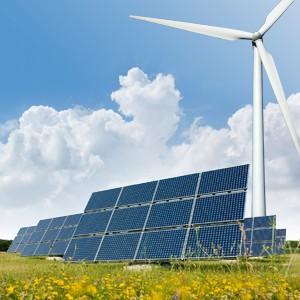 In case you haven't heard, there's a privately-funded organization that's come to Texas designed to put young people with in interest in environmental organizing out in the field to do good works while getting paid a small stipend. It's called Greencorps, and while it's 20 years old, this year is the first time any Greencorp members have shown up in Dallas-Fort Worth.
In case you haven't heard, there's a privately-funded organization that's come to Texas designed to put young people with in interest in environmental organizing out in the field to do good works while getting paid a small stipend. It's called Greencorps, and while it's 20 years old, this year is the first time any Greencorp members have shown up in Dallas-Fort Worth.
In particular, newly graduated Biology major and GreenCorp member Lisa Trope is here on behalf of Sierra Club's Clean Energy Works campaign that seeks to promote wind, geothermal and solar alternatives to fossil fuels. She's trying to get people to sign a petition to have the Texas Public Utility Commission commit itself to renewable energy target amounts and dates – much like the legislature did a decade ago or more in an effort that saw the birth of the Texas wind energy industry.
Surrounded by gas mining and processing pollution and downwind from coal plant emissions, DFW could use all the clean energy it could get. Lisa is having her first organizing meeting tomorrow night – Wednesday, September 19th, from 7 to 9 pm at the Bachman Lake Public Library's Black Box Auditorium. Do you remember your first organizing experiences? Please attend, make Lisa feel at home, and welcome her into the small DFW community of people who give a damn.
Another Chapter of Cement Kilns As Garbage Incinerators
 One of the reasons it's so disheartening to have EPA rollback the deadline for new cement plant air toxics standards and gut the PM pollution provision of those standards is because of the large and fundamental shift in what's being burned is taking place within the industry. Downwinders across the country need the protection of these new rules as soon as possible, as everything, including the kitchen sink, is being thrown into kilns.
One of the reasons it's so disheartening to have EPA rollback the deadline for new cement plant air toxics standards and gut the PM pollution provision of those standards is because of the large and fundamental shift in what's being burned is taking place within the industry. Downwinders across the country need the protection of these new rules as soon as possible, as everything, including the kitchen sink, is being thrown into kilns.
There's a determined effort underway nationwide for cement plants to secure new permits or permit "amendments" or "modifications" to burn increasing amounts of municipal and industrial garbage, including lots and lots of plastics. With new regulation of hazardous waste burning in the US taking some of the fun and profit away from that practice, the trend is now headed toward burning all kinds of "solid waste" including hard to recycle bits of municipal and industrial garbage like plastics and car "fluff" – all the non-steel parts of a car or truck, including dashboard, electronics, interiors, brake linings, etc.
Locally, TXI's 2011 permit amendment – given without public notice or opportunity for comment – is the worst example of this national trend, although Holcim and Ash Grove are also burning tires, used oils, and other kinds of industrial waste already.
Now word comes of the CEMEX plant in Louisville also making plans to burn plastics and other kinds of garbage, but
"…industrial pollution has been an issue in southwest Louisville for decades. The plant is near the coal-fired Mill Creek power plant, and residents have long complained about dust and soot from both.
Denise Allgood, vice chairwoman of the Valley Village Homeowners Association, said she was not familiar with the proposal and said any change involving air pollution is likely to be sensitive.
The (pollution) that’s coming out of that place now is of great concern,” she said. “We’ve been told by the powers that be that’s it’s better than it has ever been, but I would hope that whatever (CEMEX) is considering, they are also considering the health and welfare of the people in this area.”
What could make the problem wortse? Burning plastics that release exotic new chemicals that can hitch a ride on all that old soot and dust. We're entering a whole new era of contamination by incineration once plastics-burning becomes widespread in the nation's cement kilns. That's a big reason why we need the added protection of the EPA rules.
What Makes Protests Effective?
 "At their worst, protests and demonstrations are self-indulgent acts of personal and collective therapy, public tantrums of self-righteousness. Protests, devoid of a strong underlying organization, are bound to become self-fulfilling echo chambers.
"At their worst, protests and demonstrations are self-indulgent acts of personal and collective therapy, public tantrums of self-righteousness. Protests, devoid of a strong underlying organization, are bound to become self-fulfilling echo chambers.
At their best, protests can be an important tactic, but only a tactic, as opposed to an effective strategy. Political and social change comes only through hard, prolonged and persistent organizing, the sort of nitty-gritty, painstaking and frustrating work of persuasion that few professional protesters can be bothered with."
That's former labor organizer Natasha Vargas-Cooper weighing in on a New York Times "Room for Debate" feature that also posts the views of five other social change activists or critics on what makes citizen protests worth doing. If you're like most people, youll find a little bit of wisdom is each position, but it's worth comparing their definitions to our own. For too many activists, protesting is a reflexive act, without any context or strategy propelling it other than the urgency of the issue.
Halfway Point for Thursday EPA Hearing: 50 speakers signed-up, 50 more needed
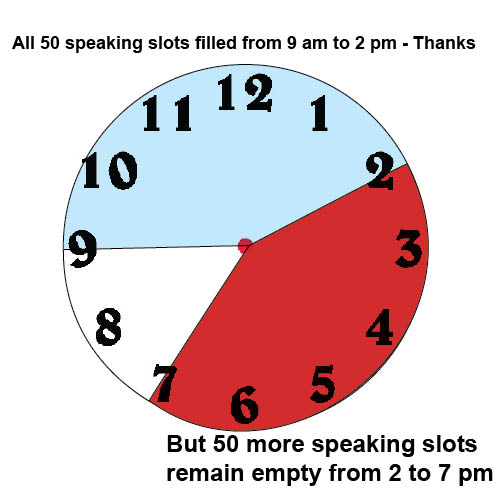 The Nation's Only Public Hearing on the Weakening of Toxic Air Pollution Emission Standards for All U.S. Cement Plants
The Nation's Only Public Hearing on the Weakening of Toxic Air Pollution Emission Standards for All U.S. Cement Plants
Thursday August 16th
9 am to 7 pm
Arlington City Hall
101 W. Abram
We've been able to sign-up 50 speakers in less than a week for national hearing on short notice – Thank You
– EPA is proposes to weaken the cement plant standard for Particulate Matter pollution, or soot, and no longer use real time monitoring of PM pollution to enforce that standard.
Talking Points for Thursday's Hearing
legislation to delay and weaken the cement standards failed in Congress after finding scant support in the Senate. Under these circumstances, it's a mystery why EPA would propose to weaken and the delay the rules now.
Our request is simple: We want the original rules, and we want them implemented on the original schedule – next year.
|
How to Reserve Your 5-Minute
Speaking Slot on the 16th:
E-mail the EPA's Pam Garrett at garrett.pamela@epa.gov or call her at
(919) 541-7966. She'll assign you a specific time.
|
|
|
|
The Day After
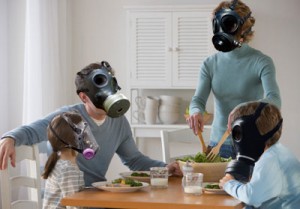 The winds found DFW again on Thursday night around 8 pm or we might have seen triple digit ozone concentrations up until the late news came on.
The winds found DFW again on Thursday night around 8 pm or we might have seen triple digit ozone concentrations up until the late news came on.
10 monitors recorded numbers that were among their four highest readings of the year. 9 recorded exceedances for the 1997 85 parts per billion ozone standard.
Rockwall had the day's highest readings by far – with an 8-hour average of 109 ppb, followed by Greenville with 97ppb, with Dallas Executive Airport (Redbird), Hinton Street, Arlington and North Dallas monitors all recording concentrations in the 90's.
For two monitors – Arlington Airport and Executive Airport – those exceedances were their fourth, and so official, violation of that '97 standard. That makes five monitors in 2012 that have crossed that line so far, and we're not out of August yet. Three more monitors are only one more bad day away from reaching the same place.
We'd already officially failed meeting the 1997 standard back in June to maintain our "non-attainment" status with the Clean Air Act for the 21st year in a row. Now we're just seeing how bad that non-attainment is this year.
One more thing. The two monitors that have historically been the hardest to bring down to legal levels – Eagle Mountain Lake and Keller – are not among those five 2012 non-attaining monitors to date, although they're on the brink. Both are located in the Northwest part of DFW. For a couple of years they were the only monitors that were in violation. This was taken as a good sign, because illegal levels of smog were confined to that corner of the Metromess that was downwind of everything in DFW, at the tail end of the ozone-producing process. It was thought if we could just get these two monitors in compliance, we'd finally see safe and legal air in DFW.
But as of August 10th, all five violating monitors are located to the east, or upwind, of these Eagle Mountain Lake and Keller monitors. The violating monitor furtherest east – Hinton Street at I-35 and Mockingbird – hadn't tripped since 2005. This year it was the first to go over the cliff. That's an indication that things are not proceeding as planned.
Last year we had the worst summer for ozone since 2007. But it was a year of record-breaking drought, and you could have plausibly used that condition as an excuse to claim an exception. This year, the drought was broken, but air quality continues to deteriorate. We're going the wrong way, but no one in officialdom will say so.
